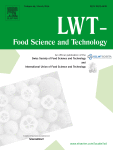Ver ítem
- xmlui.general.dspace_homeCentros Regionales y EEAsCentro Regional Mendoza - San JuanEEA MendozaArtículos científicosxmlui.ArtifactBrowser.ItemViewer.trail
- Inicio
- Centros Regionales y EEAs
- Centro Regional Mendoza - San Juan
- EEA Mendoza
- Artículos científicos
- Ver ítem
Combined effect of temperature and ammonium addition on fermentation profile and volatile aroma composition of Torrontés Riojano wines
Resumen
The effects of process temperature and ammonium supplementation on fermentation profile, volatile aroma composition and wine sensory characteristics were evaluated in Torrontés Riojano (Vitis vinifera L.) wines from Mendoza (Argentina). To do so, musts were fermented at two different temperatures (14 y 22 °C), with and without addition of 200 mg/L of yeast assimilable nitrogen, using ammonium salt. The fermentation profile was obtained by daily monitoring
[ver mas...]
The effects of process temperature and ammonium supplementation on fermentation profile, volatile aroma composition and wine sensory characteristics were evaluated in Torrontés Riojano (Vitis vinifera L.) wines from Mendoza (Argentina). To do so, musts were fermented at two different temperatures (14 y 22 °C), with and without addition of 200 mg/L of yeast assimilable nitrogen, using ammonium salt. The fermentation profile was obtained by daily monitoring weight loss and counting viable yeasts. HS-SPME-GC-MS procedure was applied in order to determine the aromatic profile of wines. Two-way ANOVA and PCA analysis revealed that the treatment fermented at low temperature and with nutrition (14AN) showed the maximal concentration of terpenes and lower levels of pH and volatile acidity, obtaining a better quality wines. However, the treatment fermented at higher temperature and with nutrition (22AN) was identified by the sensory panel as the most aromatic wine, finding notes of pineapple and banana related with its greater amounts of higher alcohol acetates. Low temperature displayed slow fermentations and the nitrogen salts were hardly consumed by yeast in this process condition. Ammonium addition and high temperature increased the maximal fermentation rate producing shorter fermentation times and greater amounts of higher alcohols acetates.
[Cerrar]

Fuente
LWT - Food science and technology 87 : 488-497. (January 2018)
Fecha
2018-01
ISSN
0023-6438
Formato
pdf
Tipo de documento
artículo
Palabras Claves
Derechos de acceso
Restringido
 Excepto donde se diga explicitamente, este item se publica bajo la siguiente descripción: Creative Commons Attribution-NonCommercial-ShareAlike 2.5 Unported (CC BY-NC-SA 2.5)
Excepto donde se diga explicitamente, este item se publica bajo la siguiente descripción: Creative Commons Attribution-NonCommercial-ShareAlike 2.5 Unported (CC BY-NC-SA 2.5)

